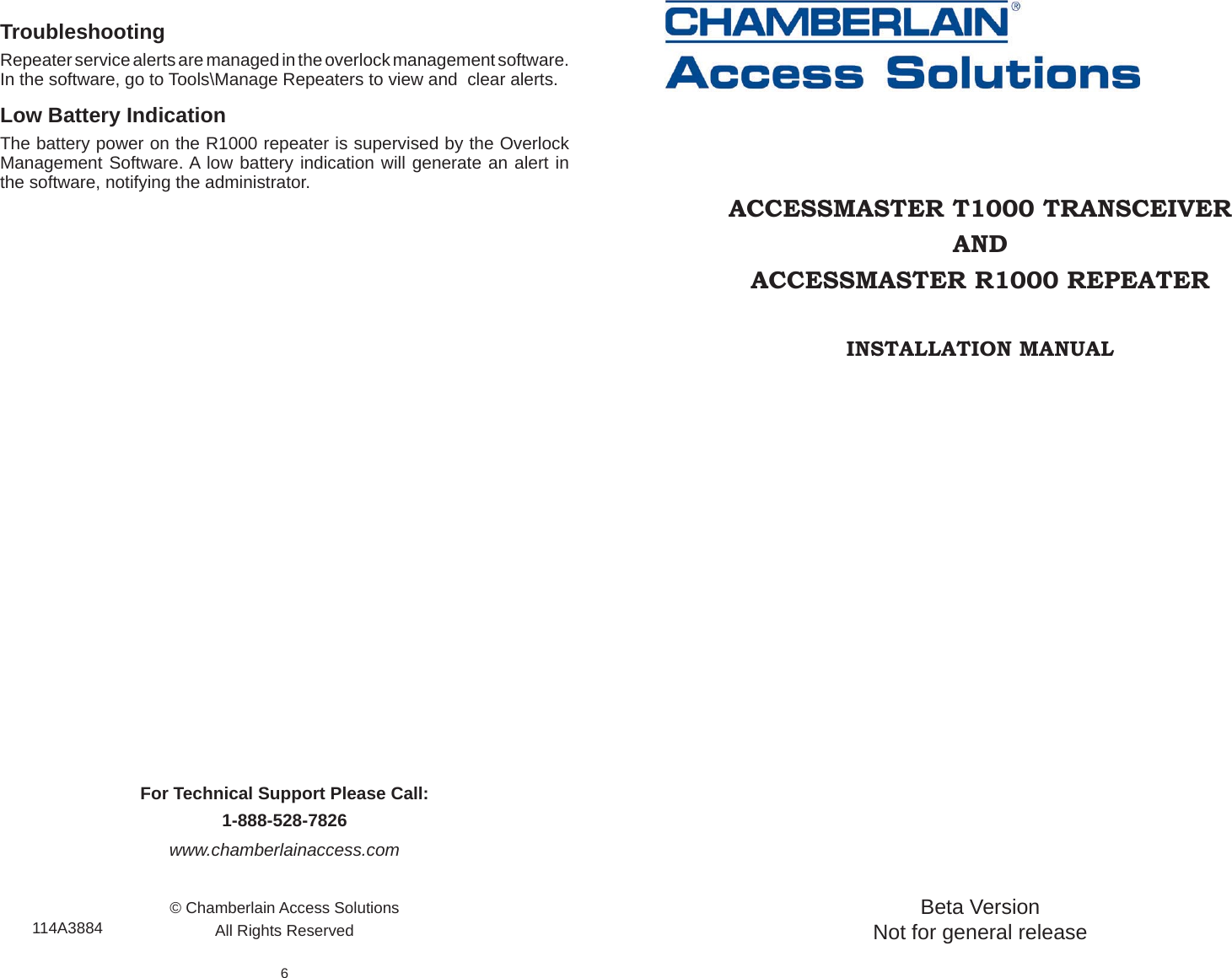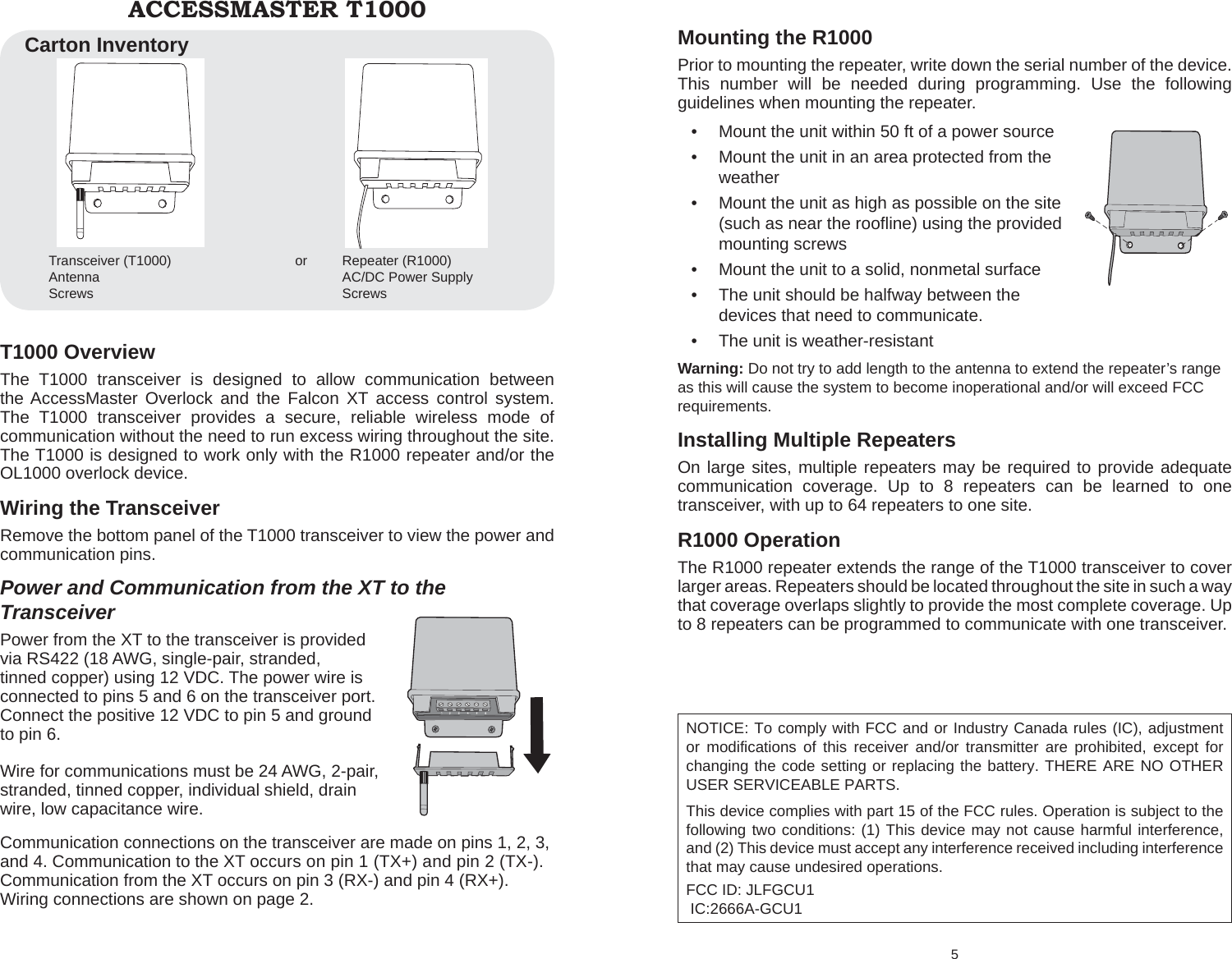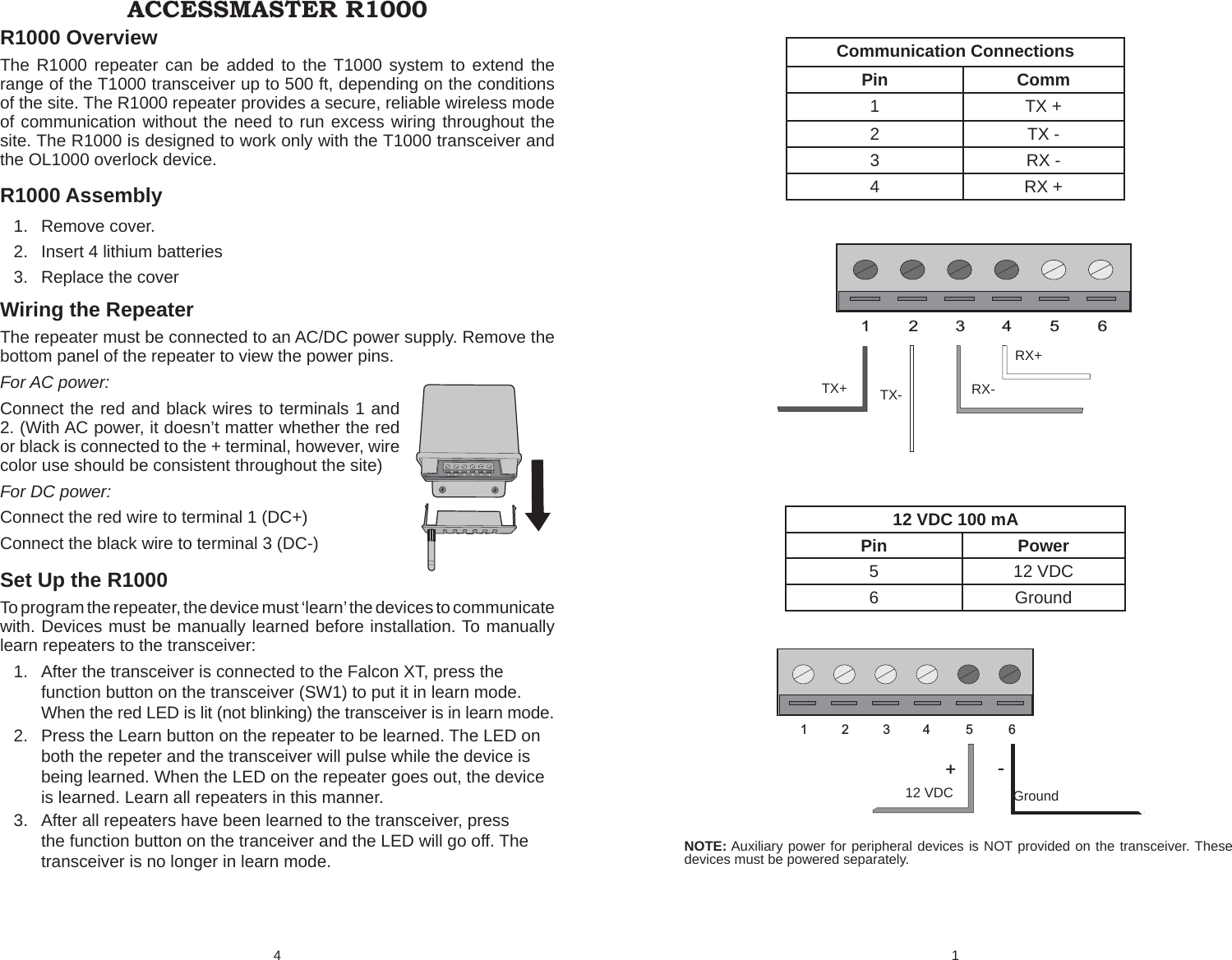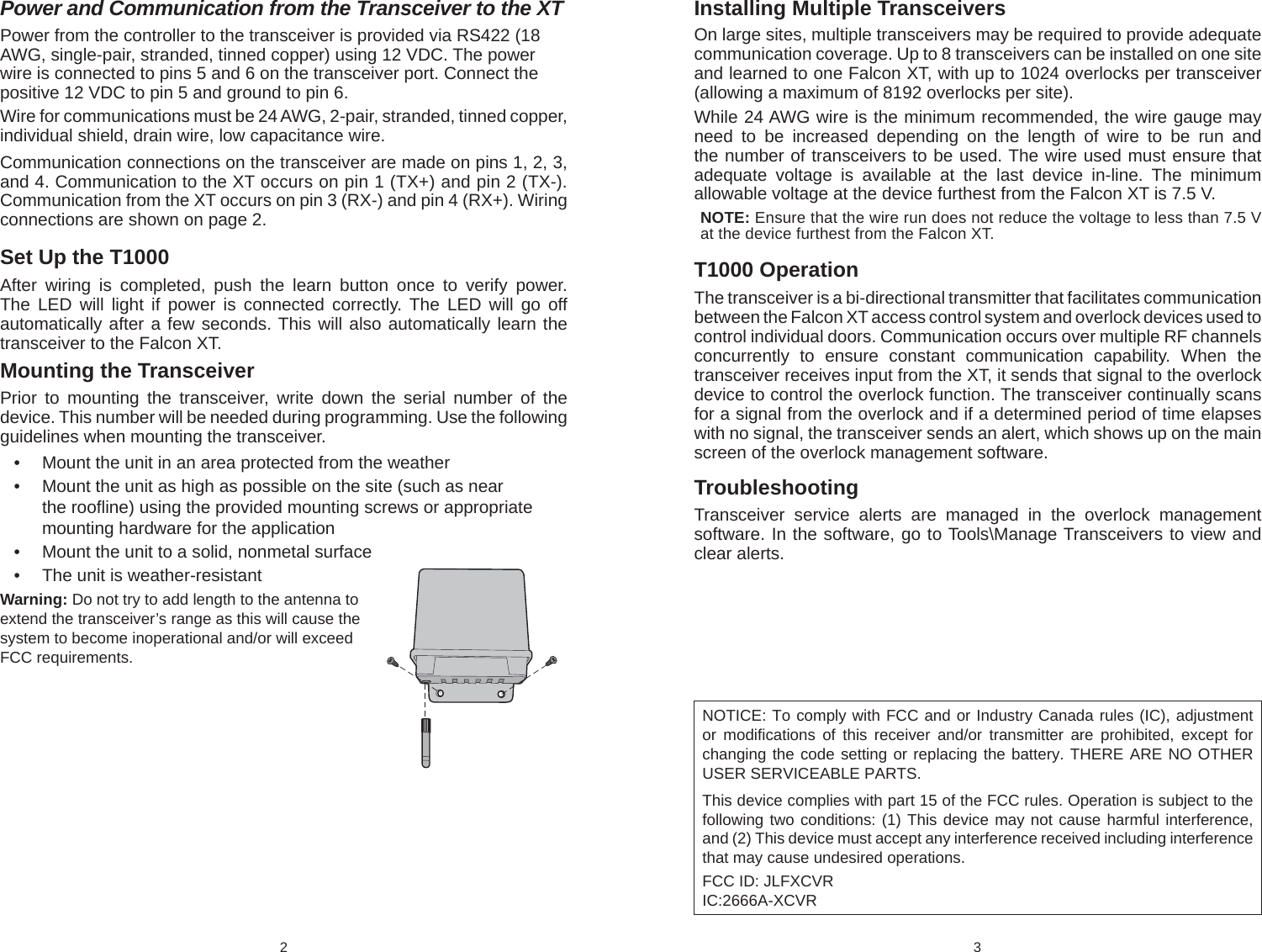Chamberlain Wireless XCVR The T1000 is a transceiver that facilitates communication User Manual 114A3884 T1000 R1000 indd
Chamberlain Wireless Products Inc. The T1000 is a transceiver that facilitates communication 114A3884 T1000 R1000 indd
User Manual



